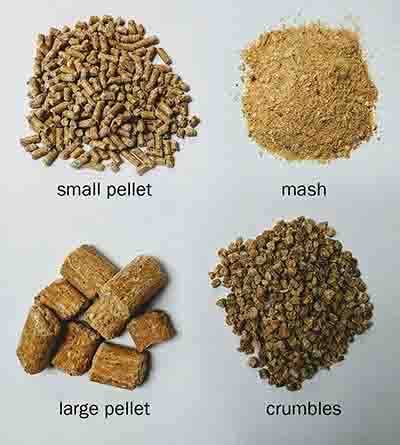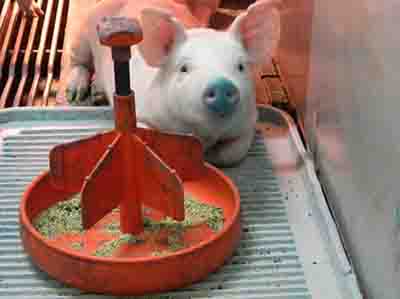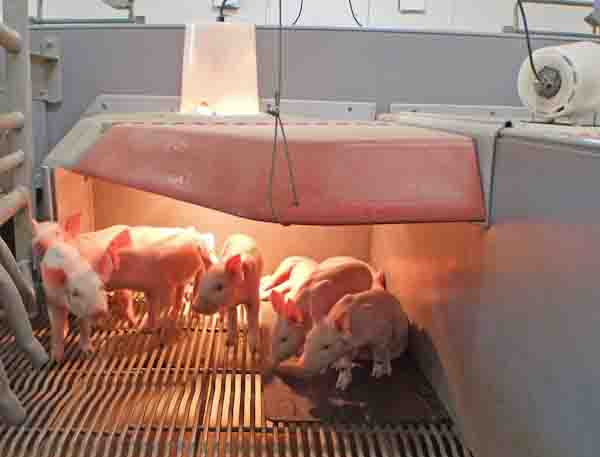If you are not careful, you will loose many newborn piglets before they are separated from their mother at 4 to 6 weeks of age. The guide below will help prevent or minimize pre-weaning death.
During Birth:
Baby pigs can be born dead. This may be due to diseases or lack of oxygen when the birth period is long. Long birth period can be caused by large number of piglets or high birth weight. Large number of piglets can also increase the number of piglets born weak. These weak piglets may then be more likely to starve, become crushed by their mother, or diseased.
If you want to reduce pre weaning mortality, you have to observe them as often as possible. Look out for the weak ones and help them to drink their mother’s milk.
Thermal Stress:
Unlike many other animals, baby pigs don’t possess mechanisms to generate heat. They lack brown adipose tissue(a type of fat that enables newborn animals to generate a great deal of heat to maintain body temperature), have very little subcutaneous fat and lack adequate hair coat.
The only way piglets can generate heat when cold is by shivering. But this will stress them and predispose them to diseases, starvation, and crushing. In a cold pen, the piglets will stay close to their mum to keep warm. But this will increase their chances of being crushed by their mother. The best way to prevent this is to provide a heated creep area where they can stay away from the sow. The sow doesn’t need the heat but the piglets do. A creep area is just a small space separated with iron or wooden bars from the rest of the pen. The piglets can move into this area but the sow can’t. See pic below:
Source: ontario.ca
Note: Your own creep area don’t have to be this sophisticated to work well. You can use wooden bars (2×2 wood) and straw bedding. Unfortunately, I have seen many pig farms in Nigeria leaving newborn piglets at the mercy of cold, wet and dirty concrete floor. Such farmers never succeed. Rather they keep experiencing rising and falling.
Above is a Farrowing pen with creep area that have a layer of straw. Courtesy of https://danbred.com/prepare-the-creep-pre-farrowing-instead-of-creep-training/
Above is Farrowing pen with covered creep area. Courtesy of https://danbred.com/prepare-the-creep-pre-farrowing-instead-of-creep-training/
Having a heated creep area goes a long way in reducing piglet death. But unfortunately, piglets are not attracted to it during the first 3 days of life. They spend most of their time suckling. And it is during this first 3 days that most pre weaning deaths occur. But thankfully, this can be prevented or minimised by transferring the mother’s odor to the creep area. One way to do this is by placing some dry grass or jute sacks where the mother usually lie down. After birthing, transfer these dry grasses or jute sacks to the creep area. You have to do this some days before she gives birth and the creep area should be built before she give birth.
Pigs with low birth weight are more susceptible to cold stress than those with high birth weight. But this becomes insignificant if the sow’s milk is rich in fat. Some pig breeds like the Meishan produces piglets that are more resistant to cold stress than Large Whites; despite the fact that Meishan piglets have lower birth weight. This is due to the high fat content in the Meishan sow’s milk that helps the piglets produce more metabolic heat.
Meishan pig breed has high milk fat. This helps their piglets resist cold even though they have low birth weight.
The creep area should have about 2cm layer of straw on the floor and a heat source. Any straw with feces or urine should be removed and replace. When using straw flooring, detecting diarrhea will be difficult if you don’t keep an eye for it. Provide a space of 0.7-0.8 m2 per piglet. It is best to have a covered creep area so that the heat won’t affect the sow. It can reduce her feed intake and milk production.
Nutrition:
The quantity and quality of milk produced by the sow is important for piglet survival. To produce enough milk, enough feed should be fed. To produce quality milk, feed should be balanced in all nutrients.
Also: Pig feed formulae thread
Try to avoid anything that will lead to low feed intake. Examples are heat stress, pests and diseases. Don’t allow the heat in the creep area to affect the sow.
Research has shown that increasing the dietary fat of the sow during late gestation (day 85-115) and early lactation (just after birth) can increase the fat content of the colostrum and thus increase survival of low birth weight pigs. But total colostrum intake will decrease. Fat sources are full fat soy beans, palm oil, full fat groundnut meal etc.
Note: Early gestation (day 1-28), Middle gestation (day 29-84) and Late gestation (day 85-115).
Creep Feeding
Creep feed is made from ingredients that are highly digestible. It has many advantages, such as:
a. Helps to reduce the PWGL (preweaning growth lag). This is a situation where piglet growth is severely affected because they were separated from their mom. They refuse to eat, cry all the time and easily fall ill.
b. helps piglets get used to solid feed before weaning
c. helps the piglets’ gut adapt to nutrients not found in milk
d. providing supplemental nutrition. It can improve average daily weight gain and feed conversion efficiency by as much as 10%.
Unfortunately, more than 40% of the piglets won’t eat the creep feed. You can encourage most to eat using the following strategies:
a. Use high-quality, highly-digestible ingredients. Use more milk products like whey, skim milk and less conventional feedstuffs like corn. This is because piglets can easily digest lactose in milk than nutrients in corn.
b. Keep creep feeders clean and free from manure. It is easier if you start creep feeding on a flat surface before using a feeder.
c. Start creep feeding as early as 1 week post-farrowing (after birth)
d. Feed small amounts frequently (minimum 3 times per day). This keeps the feed fresh and encourage eating. Start with no more than 50g feed per day. Increase as consumption increase.
e. Offer feed when the sow is eating and the piglets are awake. This way they won’t go to suckle.
f. Encourage social feeding and exploration by tray feeders and/or by changing pellet size of feed. Tray feeders are better than round feeders. Larger pellet size (10 or 12 mm) are better than smaller pellets (2 to 3 mm).

Source: ontario.ca
Creep feed pellet sizes.

Source: ontario.ca
Round piglet feeder

Source: ontario.ca
Right: Round creep feeder. Left: Tray creep feeder.
g. Make water available to encourage them eat the creep feed.
Your success in pig farming (and every other animal husbandry) will depend on how well you treat your animals. I hope these info help someone. Happy pig farming. Have any question? Ask away in the comment section. Thanks.





Leave a Reply